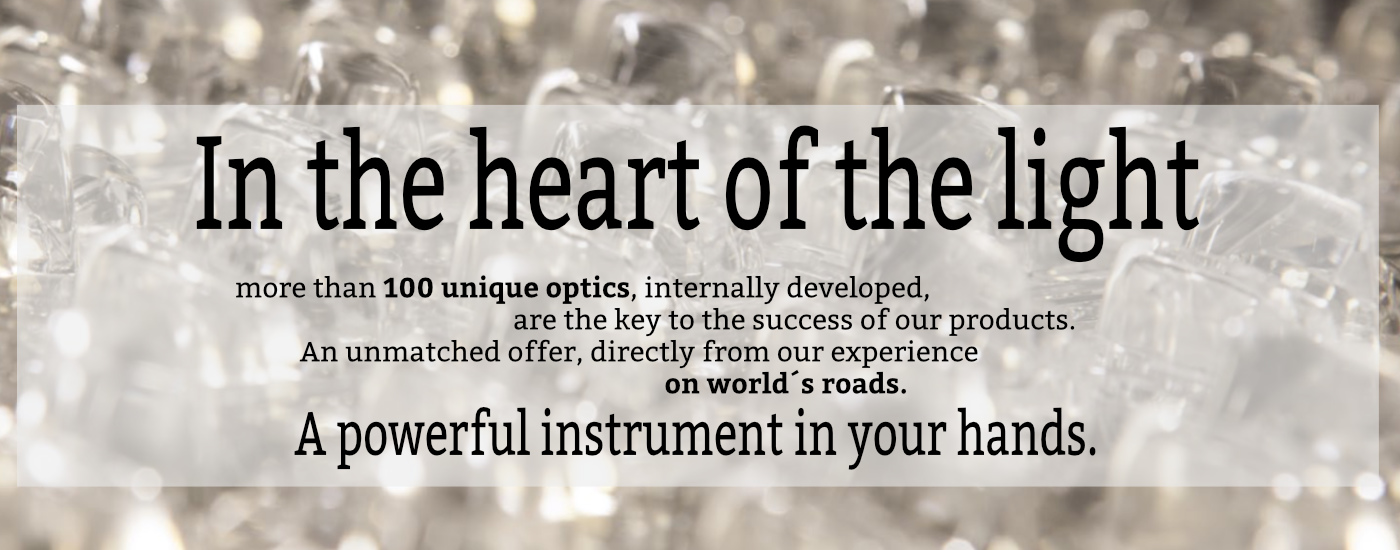
APPROVALS
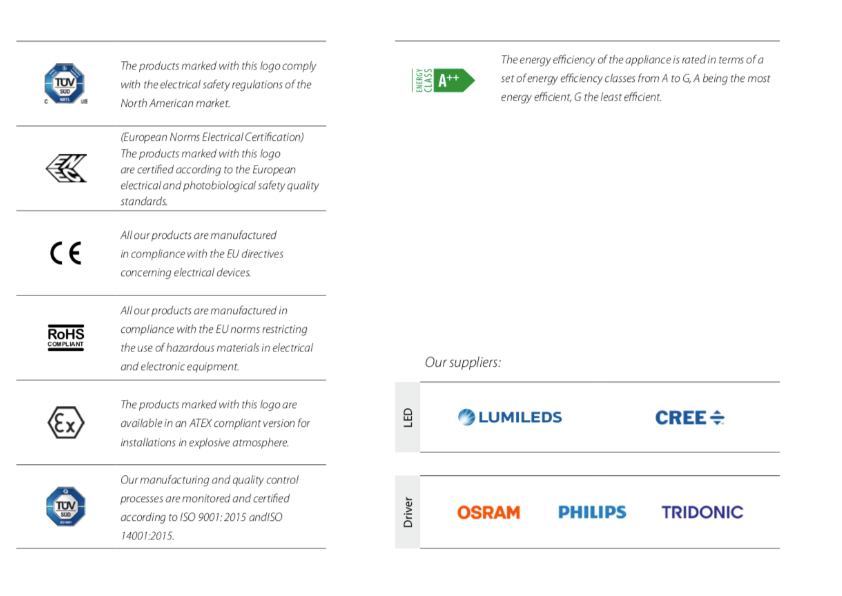
LIGHTING TERMS
Luminous flux [lumen]
The luminous flux is the amount of light generated from a luminaire. This value is only relatively representing the performance of a product, as it is up to the optics to use this light in an efficient way. Distributing the lumens
(light) only where needed provides extra energy savings. We strictly declares the lumens of broadly available products, not theoretical values as many competitors do.
Illuminance [Em, lux]
The illuminance is the quantity of light hitting a specific surface, like a road or a warehouse floor. Illuminance is the measuring parameter to consider for sidewalks, pedestrian crossings, roundabouts and all the industrial lighting.
Luminance [L, cd/m2]
The luminance is the quantity of light that the observer’s eyes (usually a driver) see, reflected from an area of 1m2 of the road surface seen from distance. It is the measuring parameter for streetlighting and tunnell lighting, as it represents a model of the real world driving conditions, where obstacles must be identified in time to permit a reaction.
Longitudinal uniformity [UI]
Longitudinal uniformity is calculated from the ratio between minimum luminance [Lmin] and maximum luminance [Lmax], measured on the axis of the lane. The measurement is repeated for every lane.
It’s a primary importance value in street and tunnel lighting design. An uniformity level below the minimum requirement is clearly visible when dark and bright stripes are evident on the pavement.
Overall uniformity [Uo]
The overall uniformity is calculated from the ratio between minimum luminance [Lmin] and average luminance [Lav], measured in all the points of the matrix drawn in the norm.
Transversal uniformity [Ut]
The transversal uniformity is the worst ratio between Lmin and Lmed between all transversal lines perpendicular to the centerline. This value applies only for tunnel lighting calculations.
Glare [TI, %]
The TI index measures the debilitating glare, caused from the presence of light sources in the sight of an observer. The percent value measures the increment of luminance that should be applied to the road to compensate the presence
of the said light source, keeping the same visibility of obstacles. TI applies only for street and tunnel lighting.
Glare [UGR]
The UGR is a grid of values used to classify
the glare produced from luminaires in indoor environments. It’s not a number that can be assigned to a luminaire but it can be obtained only running a lighting simulation of the room, defining an observer point (like a workstation) and including in the calculation parameters such as the light emitting surfaces and the surrounding illuminance.
Supercast® Aluminum
Our lights are die casted using a patented aluminum alloy with a copper content lower than 0,09%.
They are completely corrosion resistant, tested longer than 3000 hours in a salt spray chamber.
Ideal for installations by the marine environment and in close contact with corrosive agents.
Improves heat dissipation by 15% compared to other common alloys.
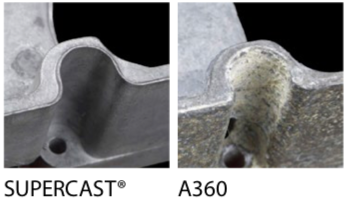
Hypercast Aluminum
Our new lights (Radiant 9 series) are die casted using a aluminum and magnesium alloy, with a copper content of 0,00%.
This alloy allows a very low weight while maintaining high performance.
They are completely corrosion resistant, tested longer than 3000 hours in a salt spray chamber.
Ideal for installations by the marine environment and in close contact with corrosive agents.
+ 20% heat dissipation compared to common aluminum alloys.
OPTICS
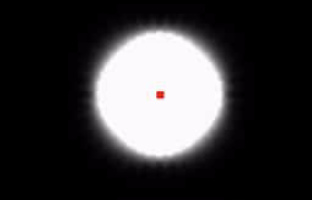
15S
Industrial / Canopies
Rotosymmetric optic for general industrial lighting up to 8 m heigth.
Available with anti-glare sandblasted glass for installations up to 6 m.
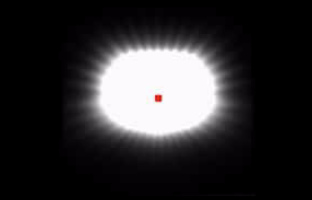
23A
Street / Parking lots
Streetlighting optic with highlighted transversal beam comparing to the standard 57A.
It is suggested for wide roads and not particularly tall poles.
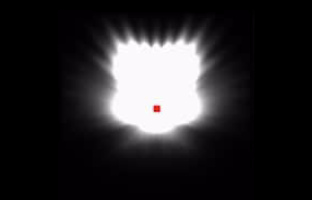
29A
Tunnels / Light towers
Strong asymmetric beam for this optic, typically used for light towers or counter beam tunnel installations.

43A
Parking lots / Tunnels
Light asymmetric beam and wide distribution make the 43A optic generally used for parkings and internal tunnels where uniformity levels are required.
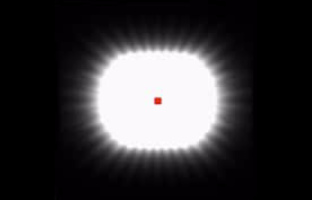
43S
Parking lots / Tunnels
Symmetric version of the 43A optic which can be used in internal part of the tunnels or as altenative of rotosymmetric solutions.
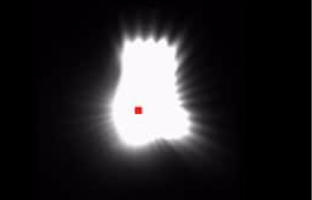
46A2
Pedestrian crossing
Double asymmetric optic typically used for pedestrian crossing with the side illumination.
Find more on our APL pages
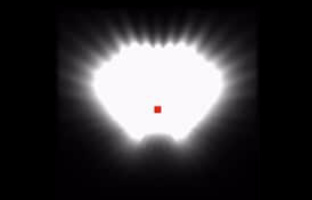
52A
Light towers
Dedicated optic for light towers or forward applications.
It is used at lower heights than 29A.

56A
Parking lots / Street
Wide beam optic ideal for parking lots or outdoor big areas.
Can also be used for streetlighting when the poles are quite retropositioned.
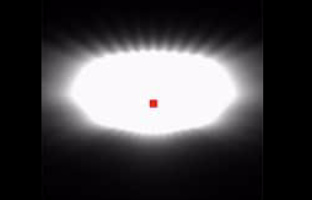
57A
Street
Excellent streetlighting optic with great performance such as longitudinal uniformity and top ratio between interdistance and height.
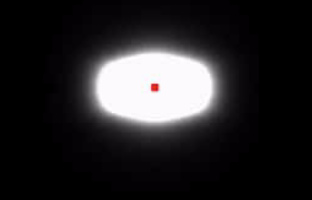
58S
Industrial
Symmetric optic for industrial lighting design around 8 m height.
A typical application are industrial aisles.
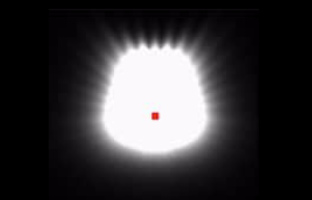
59A
Parking lots / Street
If the 29A optic is too much forward beam with low longitudinal distribution, then the 59A is what you are looking for.
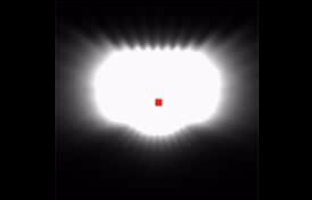
64A
Street / Parking lots
Wider beam compare to 57A normally used for roads with elevated width.
Great results are also guaranteed for parkings and stand alone applications.
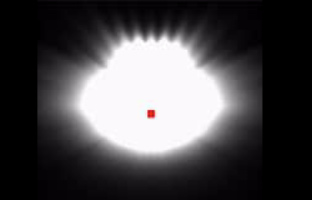
73A
Large squares
For medium-low heights in oudoor areas and parking lots.
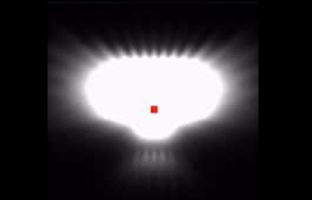
88A
Parking lots / Street
Asymmetric streetlighting optic used mainly for roads with sidewalks or bicycle lanes.
It guarantees excellent longitudinal uniformities.
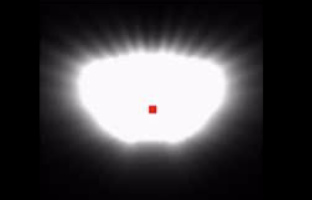
92A
Street
Asymmetric streetlighting optic used mainly for roads with sidewalks or bicycle lanes.
It guarantees excellent longitudinal uniformities.
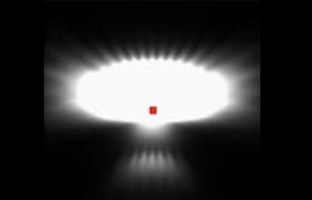
100A
Street
This optic is ideal for applications such as narrow roads or at very high installations.
It guarantees high luminance values with very low power consumptions.
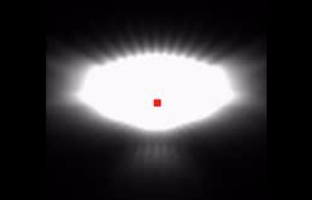
102A
Street
This optic is ideal for applications such as narrow roads or at very high installations.
It guarantees high luminance values with very low power consumptions.

104A
Station squares
For parking lots or outdoor areas with low-medium installation heights we suggest this optic 104A.
Kimmo Korpilahti
Head of Design and Sales
kimmo@floriance.eu
LV: +371 28695614
FIN: +358 40 3742798
Skype: kimmo.korpilahti
WhatsApp √
Matti Suonvieri
Sales Director
matti@luminance.eu
LV: +371 29722644
FIN: 0400 139 490
